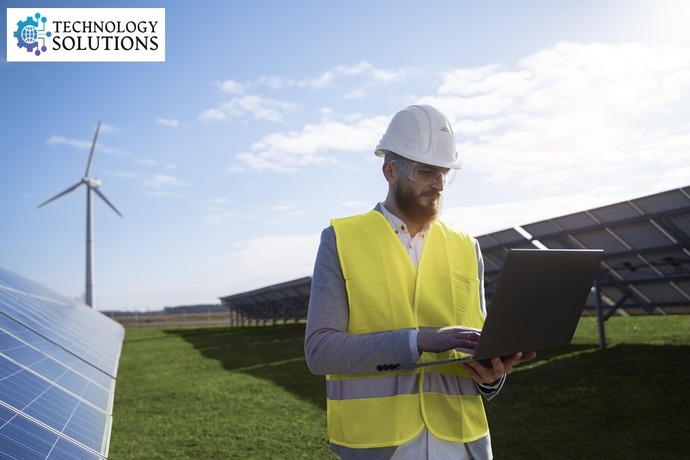As the global push for sustainable energy intensifies, renewable energy sources such as wind, solar, and hydroelectric power are becoming increasingly integral to the energy mix. However, the integration of these variable and decentralized energy sources into existing power grids presents significant challenges. Traditional grid management systems, which were designed for stable and predictable power generation, struggle to accommodate the intermittent and distributed nature of renewables. This is where the Internet of Things (IoT) steps in, offering innovative tech solutions that enhance the efficiency, reliability, and flexibility of renewable energy grid management.
The Challenges of Integrating Renewable Energy
Renewable energy sources, while environmentally friendly, are inherently variable. Solar power generation fluctuates with weather conditions and the time of day, while wind power is subject to the unpredictability of wind patterns. These fluctuations can lead to imbalances in supply and demand, creating challenges for grid operators tasked with maintaining stability and reliability.
Traditional grid management systems are often centralized and lack the real-time data and control needed to manage these fluctuations effectively. This can result in issues such as power outages, frequency variations, and inefficient use of energy resources. Moreover, the decentralized nature of renewable energy sources—often spread across vast geographic areas—adds another layer of complexity to grid management.
How IoT is Revolutionizing Grid Management
The Internet of Things (IoT) is revolutionizing grid management by providing the tools necessary to monitor, analyze, and control energy generation and distribution in real-time. IoT solutions enable the integration of vast amounts of data from various sources, including energy production units, storage systems, weather stations, and smart meters. This data is then used to optimize grid operations, balance supply and demand, and enhance the overall efficiency of the energy system.
- Real-Time Monitoring and Data Collection
One of the primary advantages of IoT in grid management is its ability to provide real-time monitoring and data collection. Sensors and smart devices installed at various points in the energy grid continuously collect data on energy production, consumption, and environmental conditions. This data is transmitted to central systems where it is analyzed to provide a comprehensive view of the grid’s performance.
Real-time monitoring allows grid operators to detect and respond to issues as they arise, minimizing downtime and preventing outages. For instance, if a drop in solar power generation is detected due to cloud cover, the system can automatically adjust the output from other sources or draw from energy storage systems to maintain balance.
- Predictive Analytics and Forecasting
IoT solutions also enable predictive analytics and forecasting, which are crucial for managing the variability of renewable energy sources. By analyzing historical data and current conditions, IoT systems can predict future energy production and consumption patterns. This allows grid operators to anticipate changes in supply and demand and make proactive adjustments to the grid.
For example, predictive analytics can forecast a drop in wind power generation based on weather predictions, enabling grid operators to increase the output from other sources or manage demand through demand response programs. This helps in maintaining grid stability and avoiding disruptions.
- Enhanced Grid Flexibility and Decentralization
IoT enables enhanced grid flexibility by facilitating the integration of decentralized energy resources, such as rooftop solar panels and small-scale wind turbines, into the grid. With IoT, these distributed energy resources can be monitored and controlled remotely, allowing for more efficient use of renewable energy.
Furthermore, IoT solutions support the development of microgrids—localized grids that can operate independently or in conjunction with the main grid. Microgrids are particularly beneficial in integrating renewable energy, as they can be optimized to match local energy production with consumption, reducing the strain on the main grid and improving energy resilience.
- Demand Response and Energy Efficiency
IoT-driven demand response programs play a key role in balancing supply and demand in grids with high renewable energy penetration. By using IoT devices to monitor and control energy consumption in real-time, these programs can adjust demand to match available supply. For instance, during periods of low renewable energy production, IoT systems can temporarily reduce the power consumption of non-essential devices or shift energy-intensive activities to times when renewable energy is abundant.
This not only helps in stabilizing the grid but also improves overall energy efficiency. Consumers benefit from reduced energy costs, while grid operators can manage the grid more effectively without resorting to costly peaking power plants.
The Future of Renewable Energy Grid Management with IoT
As renewable energy continues to grow, the role of IoT in grid management will become increasingly important. The future will likely see even more sophisticated IoT solutions that leverage artificial intelligence (AI) and machine learning to further enhance grid performance. These technologies will enable more accurate forecasting, better demand response strategies, and improved integration of renewable energy sources.
Moreover, as IoT devices become more widespread and interconnected, the potential for creating fully autonomous and self-healing grids will emerge. These grids will be capable of automatically detecting and resolving issues without human intervention, leading to unprecedented levels of reliability and efficiency.
Conclusion
IoT solutions are proving to be a game-changer in renewable energy grid management. By providing real-time monitoring, predictive analytics, enhanced flexibility, and efficient demand response, IoT is helping to overcome the challenges of integrating renewable energy into the grid. As the energy landscape continues to evolve, IoT will play a critical role in ensuring that renewable energy sources can be harnessed effectively to create a sustainable and reliable energy future. For energy companies and grid operators, embracing IoT is not just an option—it’s a necessity for staying competitive in an increasingly dynamic and decentralized energy market.

